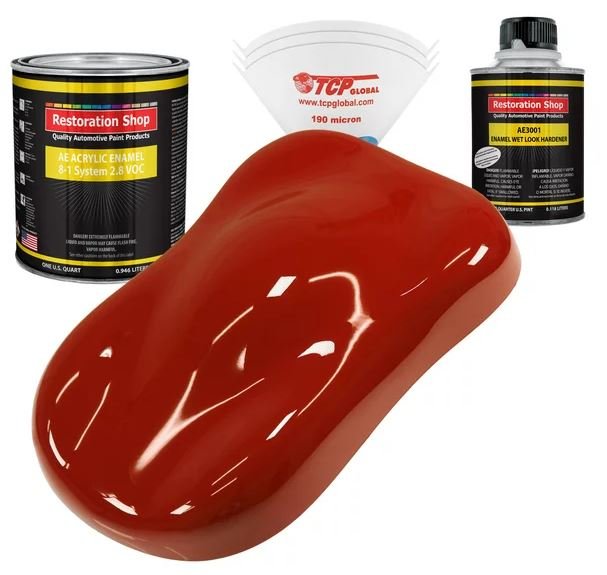How To Maximize Durability When Using Single Stage Paint
/CAN SINGLE STAGE PAINT MATCH THE DURABILITY OF TWO STAGE PAINT JOBS?
As a body shop owner, one of the most common questions I get from DIY painters concerns single stage automotive paint. Personally, as a professional painter, I loathe single stage paint and avoid using it at all costs. But there are some advantages for the novice painter who doesn’t have access to a paint booth, or the know-how on applying two-stage paint.
But the question I often get is, how long will the single stage paint last, and is it durable enough to stand up to the elements?
From my experience, single stage automotive paint can last 5 to 7 years with proper care if it is applied correctly, and if your surface is prepared right prior to painting. I can’t stress enough how important it is to make sure that your car’s panels are properly sanded and prepped before painting. It can make the difference between a good looking rookie job, and a train wreck that leaves your car looking worse than it did before you started.
As far as durability is concerned, it’s less durable than clear coat paint, which can last 10 years or longer with proper care. Single stage paint is also more prone to fading and scratching. That’s because a clear coat has an added chemical activator that must be mixed in prior to painting, which makes it much stronger and scratch resistant.
However, single stage paint is much less expensive than using a base coat and clear coat paint combination, and can be easier to apply because you have just one step to the painting process. This can cut down on the overall time it takes to get the job done.
But there is one thing to consider with single stage paint… it’s a LOT harder to spray apply without causing runs. That’s because the clear component is actually mixed into the base color itself. Regular two stage automotive paint sprays on with a matt effect, and the shininess comes when you add the clear coat layer.
Clear coat is much more prone to running, if applied too heavily with a paint gun. Base coat paint is much more dense with pigments, and takes considerably less material to achieve “coverage”, which means it will achieve the full depth of color without as much paint.
Since single stage paint has the clear component mixed into the formula, it can take quite a bit more paint to achieve full coverage, especially when you are changing the color from the vehicle’s original paint.
The key to getting complete coverage with single stage paint without causing runs is to take your time. Don’t rush the project. Apply modest coats, allow proper “flash time” (the time it takes for the solvents to evaporate) in between coats, and apply three to four good coats to achieve final coverage.
Going back to my previous point, you will want to make sure that you wash the vehicle thoroughly before starting, get it sanded smoothly to at least a 400 grit paper, and use a grease & wax remover to clean the surface before applying the paint. Proper prep work will save you from a future paint failure, and it will enhance the finished look of the job.
Once the paint has properly dried and cured, you can apply a standard car wax with UV protection to extend the life of the paint. Keeping your vehicle washed when exposed to tree sap, dirt, and mud will also ensure that you get the most out of your new coating.
Good luck on your project, and check out the links below to single stage paints that I recommend for use!
Carlton Flowers
Color Boss Custom Auto Body
